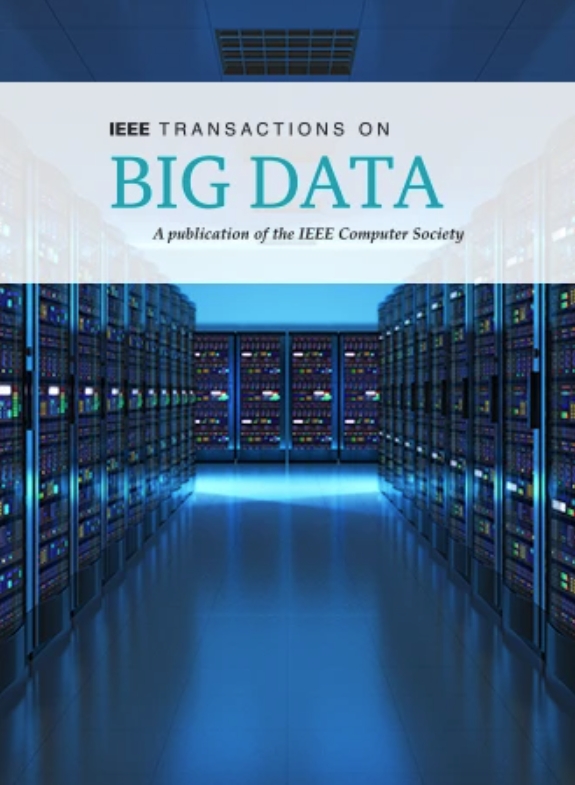Toward High-Quality Spatiotemporal Recommendation: Trajectory Recovery Based on Spatial and Temporal Dependencies
IF 5.7
3区 计算机科学
Q1 COMPUTER SCIENCE, INFORMATION SYSTEMS
引用次数: 0
Abstract
The rapid advancement of location and information technologies has generated a significant volume of human mobility data, which has been extensively utilized in spatiotemporal recommendation systems, including personalized point-of-interest recommendation, route recommendation, and location-aware event recommendation. Achieving high-quality recommendation results necessitates excellent quality of input trajectory data. However, trajectories obtained from GPS-enabled devices often contain missing and erroneous data that is unevenly distributed over time and highly sparse, which significantly hampers the effectiveness spatiotemporal data analytics. Therefore, trajectory recovery plays an important role in spatiotemporal recommendation systems. The objective of trajectory recovery is to utilize historical trajectories to restore missing locations, providing high-quality data for spatiotemporal recommendation systems. The development of an effective trajectory recovery mechanism faces three major challenges: 1) Complex and multi-granularity transition patterns among different locations; 2) Difficulty in discovering spatio-temporal dependencies; and 3) Data sparsity and noise. To address these challenges, we propose an attentional model with spatio-temporal recurrent neural networks, ARMove, to recover human mobility from long and sparse trajectories. In ARMove, we first design a spatio-temporal weighted recurrent neural network to capture users’ long-term preferences. Next, we introduce a multi-granularity trajectory encoder to model complex transition patterns and multi-level periodicity of human mobility. An attention-based history aggregation module is proposed to leverage historical mobility information. Extensive evaluation results reveal that our model outperforms the state-of-the-art models, demonstrating its ability to reconstruct high-quality and fine-grained human mobility trajectories.迈向高质量时空推荐:基于时空依赖的轨迹恢复
位置和信息技术的快速发展产生了大量的人类移动数据,这些数据已被广泛应用于时空推荐系统,包括个性化兴趣点推荐、路线推荐和位置感知事件推荐。获得高质量的推荐结果需要高质量的输入轨迹数据。然而,从启用gps的设备获得的轨迹通常包含丢失和错误的数据,这些数据随时间分布不均匀且高度稀疏,这极大地阻碍了时空数据分析的有效性。因此,轨迹恢复在时空推荐系统中起着重要的作用。轨迹恢复的目标是利用历史轨迹来恢复缺失的位置,为时空推荐系统提供高质量的数据。建立有效的轨迹恢复机制面临三大挑战:1)不同位置间复杂、多粒度的过渡模式;2)难以发现时空依赖关系;3)数据稀疏性和噪声。为了解决这些挑战,我们提出了一个具有时空递归神经网络的注意力模型ARMove,以从长而稀疏的轨迹中恢复人类的移动性。在ARMove中,我们首先设计了一个时空加权递归神经网络来捕捉用户的长期偏好。接下来,我们引入了一个多粒度的轨迹编码器来模拟复杂的过渡模式和多层次的人类移动周期。提出了一种基于关注的历史移动信息聚合模块。广泛的评估结果表明,我们的模型优于最先进的模型,证明了其重建高质量和细粒度人类移动轨迹的能力。
本文章由计算机程序翻译,如有差异,请以英文原文为准。
求助全文
约1分钟内获得全文
求助全文
来源期刊

IEEE Transactions on Big Data
Multiple-
CiteScore
11.80
自引率
2.80%
发文量
114
期刊介绍:
The IEEE Transactions on Big Data publishes peer-reviewed articles focusing on big data. These articles present innovative research ideas and application results across disciplines, including novel theories, algorithms, and applications. Research areas cover a wide range, such as big data analytics, visualization, curation, management, semantics, infrastructure, standards, performance analysis, intelligence extraction, scientific discovery, security, privacy, and legal issues specific to big data. The journal also prioritizes applications of big data in fields generating massive datasets.
 求助内容:
求助内容: 应助结果提醒方式:
应助结果提醒方式:


